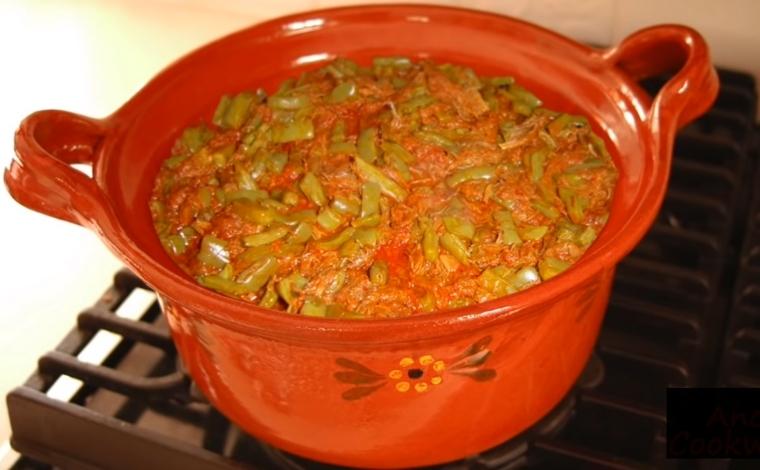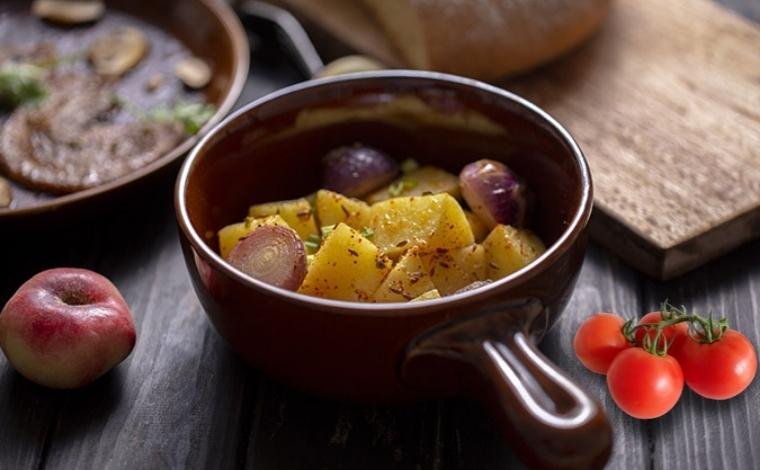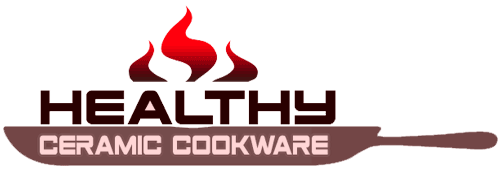Last Updated on August 2, 2023
Summary of Contents
Short overview: Origin and background of De silva cookware
The terracotta De Silva is ideal for slow cooking like in the oven, microwave, and flammable burner. The cookware brand was established in Italy in 1973, meaning it has been in circulation for some time. Terracotta harmonizes the exchange of flavors, enhances the flavors, and gives the food an exceptional taste. Distributing the heat uniformly and gradually over the entire surface is significant here. The earthenware does not alter the nutritional principles, prevents fat transformation into fatty acids and glycerine, substances harmful to the body, and keeps the food warm.
The cracks in the coating are due to the material’s porosity. Boil the cookware with water and vinegar. This little trick will alleviate the seepage characteristic of the liquid due to the material’s porosity. To delete the previous cooking flavors, washing the dishes with hot water and ordinary detergent is essential. Leave the pot to dry completely before storing it; this will prevent the release of odors.
Benefits Of Cooking With De Silva Cookware
De Silva is known for their high-quality, Italian-made cookware, which includes pieces such as terracotta pots and pans. Here are some potential benefits of cooking with De Silva cookware:
- Heat Distribution: De Silva cookware is known for its excellent heat distribution. The terracotta absorbs heat and then evenly distributes it, helping to cook food uniformly and efficiently.
- Flavor Preservation: The natural properties of terracotta in De Silva cookware can enhance the flavor of the food. It also has the ability to retain heat for a long time, which keeps the food warm.
- Energy Efficiency: Due to the great heat retention, less energy is required to keep the food warm once it reaches the desired temperature.
- Versatility: De Silva cookware can be used in the oven, microwave, and can also be used on gas stoves with a heat diffuser. It’s perfect for a wide range of recipes, from braises and stews to baked goods.
- Safety: De Silva cookware is lead and cadmium free, making it safe for cooking. It is also non-reactive, which means it will not alter the taste of your food or release any harmful substances when heated.
- Aesthetic Appeal: De Silva’s terracotta cookware has a natural, rustic look that is both classic and modern. It’s not only a cooking tool, but also a beautiful piece to present meals in.
When it comes to cleaning and maintaining De Silva cookware, here are a few tips:
- Initial Use: Before the first use, it is recommended to immerse the cookware in water for at least 12 hours. This will help to strengthen the piece and make it more durable.
- Cleaning: Hand washing is recommended for De Silva cookware. Avoid using harsh detergents or metal scrubbing pads, which can damage the surface. Instead, use warm water and a soft sponge or cloth. It’s best to clean the cookware immediately after use, as dried-on food can be difficult to remove.
- Drying: Ensure the cookware is thoroughly dried before storing to prevent mold and mildew. Store it in a dry place and avoid stacking pieces on top of each other, as this could cause them to chip or crack.
- Seasoning: Some De Silva cookware may benefit from periodic seasoning. This involves coating the inside of the pot with a small amount of oil, then heating it in the oven to create a natural, non-stick surface.
- Avoiding Rapid Temperature Changes: To prevent cracking, avoid subjecting De Silva cookware to rapid temperature changes. For example, don’t move a hot pot directly from the stove to a cold countertop or vice versa.
How to cook with De Silva cookware?
De Silva cookware is all about clay and terracotta pots and pans. Cooking in terracotta results in a moist, even heat that remains in the pan long after it is taken from your oven, helping to keep food warm. The pans can also be used for frying, roasting, or casseroles. The clay can retain and transmit flavors between meals, so many people prefer to cook sweet and savory items in different pots. Very fine cracks can form in the glaze inside your pot over time. These are not defects but allow the water’s micro vapors to be released into the food during the cooking process. Let us see a complete cooking and maintenance process of the De Silva cookware,
Step-1: Soak in water
First, wash the pan thoroughly in warm water. Do not use detergent or soap, as this may block the delicate pores in the clay. Next, completely submerge the pot in room-temperature water. How long your terracotta pan needs to be immersed in water varies. The general rule is the longer, the better, particularly for larger pieces. Water cures the terracotta and needs time to soak in effectively, adding strength and weight. Our suppliers recommend four to 24 hours of soaking for thicker pans and two to four hours for smaller pieces up to 6 inches. The pan will absorb a considerable amount of water. Even if the casseroles are destined for cooking purposes straight away, a good soaking is always recommended, as it will ‘toughen up’ your terracotta for more durability and a longer lifespan.
Step-2: Seasoning De Silva cookware
Once your pans and lids have been soaked in water, drain and wipe them dry. They are now ready to be introduced to heat. For the initial heating, fill your terracotta pot with water just below the rim and gently heat it on the stove or in the oven, gradually turning up the heat to bring the water to a boil. Let the liquid boil down until about only half a cup remains. Cool slowly and rinse. Use a flame diffuser if heating the pan on a gas stove. A diffuser is not required on an electric range.
The Spanish terracotta cookware can become extremely hot, so handle it carefully during and after cooking. Terracotta also has outstanding insulating qualities and will keep hot food longer than other cookware. When serving food in terracotta, it is worth keeping in mind that the piece will remain hot for longer than expected, even if it has been on the table for some time. So be sure to use oven mitts when handling the pan, and place the pan on a trivet, wooden board, or folded towel after removing it from your oven. Placing a hot pan on a cold work surface can cause cracking.
Step-3: Start cooking
Your pan has now had its first seasoning and is ready for use. The process of immersing it in water only needs to be done once, not each time it is used, though you can briefly rinse the pot and lid before each use to get it wet. Cooking in the casserole pan will continue to season and cure the terracotta, so the more you enjoy cooking in your clay dishes, the longer they will last. Do not put cold food straight into a hot terracotta pan unless you first heat some oil in the bottom. Again, you are trying to avoid thermal shock.
Step-4: Cleaning De Silva cookware after cooking
After using your casserole pan, we recommend washing your terracotta by hand, although it can be placed in the dishwasher. Always allow the pot to cool before putting it in cold water. Avoid abrasive scourers. Instead, use a little baking soda with a soft brush or sponge to clean the pan. For more stubborn marks, soak the pan in soapy water for as long as necessary. Rinse well and allow it to air dry completely before storing. Do not leave the lid on the pan when storing it in the cupboard.
Is De Silva cookware safe?
It is entirely safe cookware and compatible with the oven, flammable burner, and all other stovetops. As the signature product is clay and terracotta, it can be considered heat-friendly, and you can also use it at medium to high temperatures. But here is a simple consideration: do not put a hot clay pot on a cold or cool surface because there is a possible chance of cracking and dismantling. So when taking a hot pot out of the oven, put on a plank of wood or a heat-resistant trivet. So the summary is that you can undoubtedly use this cookware in every possible scenario.
Conclusion
De Silva cookware stands as a testament to both functionality and beauty in the culinary world. Its renowned terracotta construction not only ensures excellent heat distribution and flavor preservation, but also creates a striking aesthetic that can easily transition from oven to table. Its versatility in being able to handle a range of cooking methods and its lead and cadmium free construction add to its appeal. While maintenance may require a touch more care than your average kitchenware, the unique benefits and longevity of these pieces more than make up for the extra effort. Investing in De Silva cookware means investing in a high-quality, safe, and energy-efficient cooking experience, while also enjoying the charm and rustic elegance they bring to your kitchen.
FAQs
Question: What is De Silva cookware made of?
Answer: De Silva cookware is made from high-quality terracotta.
Question: Where is De Silva cookware manufactured?
Answer: De Silva cookware is manufactured in Italy.
Question: Can De Silva cookware be used on a gas stove?
Answer: Yes, but with a heat diffuser to protect the terracotta material.
Question: Is De Silva cookware safe to use in the oven and microwave?
Answer: Yes, De Silva cookware is safe for use in both the oven and microwave.
Question: Is De Silva cookware lead and cadmium free?
Answer: Yes, De Silva cookware is lead and cadmium free, making it safe for cooking.
Question: How should De Silva cookware be cleaned?
Answer: It’s best to hand wash De Silva cookware using warm water and a soft sponge or cloth.
Question: How should De Silva cookware be stored?
Answer: Ensure the cookware is thoroughly dried before storing to prevent mold and mildew. Avoid stacking the pieces on top of each other to prevent damage.
Question: How does De Silva cookware enhance the flavor of food?
Answer: The terracotta material in De Silva cookware absorbs and distributes heat evenly, which can enhance the flavor of the food.
Question: How should De Silva cookware be prepared before the first use?
Answer: Before the first use, it is recommended to immerse the cookware in water for at least 12 hours to strengthen the piece.
Question: Can De Silva cookware crack if subjected to rapid temperature changes?
Answer: Yes, it’s recommended to avoid rapid temperature changes to prevent the cookware from cracking.
Question: Does De Silva cookware require seasoning?
Answer: Some De Silva cookware may benefit from periodic seasoning to create a natural, non-stick surface.
Question: Can De Silva cookware be used for a wide range of recipes?
Answer: Yes, De Silva cookware is versatile and perfect for a wide range of recipes, from braises and stews to baked goods.
Question: Is De Silva cookware energy-efficient?
Answer: Yes, due to the great heat retention of terracotta, less energy is required to keep the food warm once it reaches the desired temperature.
Question: How long does De Silva cookware typically last?
Answer: With proper care and maintenance, De Silva cookware can last for many years.
Question: Is De Silva cookware aesthetically appealing?
Answer: Yes, De Silva’s terracotta cookware has a natural, rustic look that is both classic and modern, adding to the aesthetic appeal of your kitchen and dining table.

 Terracotta Cookware Price
Terracotta Cookware Price
My deep DeSilva pot developed black beads on the outside after baking for several hours…. What is this?